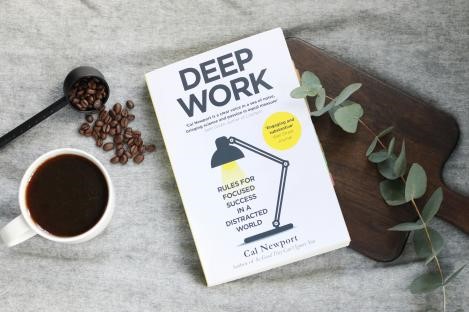In today’s competitive literary market, standing out requires more than just talent; it demands a mastery of storytelling techniques and a deep understanding of the evolving literary landscape. At BayMar Publishing, we are committed to guiding writers through these complexities, helping them refine their craft to professional standards. As a leading name among Canadian publishers, we offer insights and strategies that set our authors apart. This guide delves into some advanced writing techniques involving character development, innovative plot construction, thematic integration, and narrative techniques, culminating in a detailed example to showcase these strategies in action.
Mastering the Art of Character Development
The first of the advanced writing techniques to explore involves mastering the art of character development. Developing rich, nuanced characters is essential for creating stories that resonate deeply with readers. Characters should not merely exist within a narrative. Instead they should drive it, with their growth and transformation acting as the story’s backbone.
Suggestions:
Conduct In-Depth Character Interviews: Create detailed questionnaires for your characters, exploring their fears, desires, regrets, and secrets. This helps to uncover their complexities and contradictions, making them more relatable and real to your audience.
Chart Character Evolution: Visualize your character’s development throughout the story. Use character arcs to track their emotional states, decision-making processes, and relationships. This ensures a coherent and believable transformation.
Innovating Plot Construction
A compelling plot is vital for engaging readers and driving the narrative. Innovative plot construction involves crafting a story structure that captivates and surprises the audience, maintaining tension and interest from start to finish.
Suggestions:
Utilize a Plot Matrix: Manage the complexity of your narrative by using a plot or idea matrix. Use this writing tool to track various storylines and ensure they converge meaningfully. This tool helps maintain narrative coherence and enhances the impact of major plot points.
Strategically Place Plot Twists: Integrate plot twists that are both surprising and logical, based on subtle hints earlier in the story. These twists should challenge the reader’s assumptions and add depth to the narrative.
Harnessing Literary Themes and Symbols
Themes and symbols add layers of depth to a narrative, offering readers a richer, more rewarding experience. They serve as the backbone of the story, subtly guiding the reader through the narrative’s deeper meanings.
Suggestions:
Develop a Thematic Framework: Early in the writing process, identify key themes and weave them throughout your narrative. This framework should guide every aspect of your story, from plot development to character behaviour.
Incorporate Meaningful Symbols: Use symbols to reinforce the themes subtly. Choose symbols that have relevance to the plot and resonate with the thematic elements of the story, ensuring they are woven naturally into the narrative.
Advanced Narrative Techniques
Exploring advanced narrative techniques can differentiate your story, providing a unique voice and offering fresh perspectives.
Suggestions:
Experiment with Narrative Structure: Consider non-linear timelines or multiple perspectives to add complexity and richness to your storytelling. These techniques can provide fresh angles and deeper insights into your narrative.
Implement Stream of Consciousness: Use this advanced writing technique to offer intimate insights into a character’s thoughts and emotions. This approach can deepen the reader’s connection to the character and enhance the emotional resonance of your story.
Enhancing Dialogue and Description
Crafting authentic dialogue and using vivid descriptions are advanced writing techniques crucial for bringing your characters and settings to life. Effective dialogue captures the unique voices of your characters. This helps to reflect their backgrounds and current emotional states, while detailed descriptions engage the senses, painting a vibrant scene for the reader. Together, these elements enrich the narrative, providing depth and enhancing the reader’s emotional engagement with the story.
Suggestions:
Craft Authentic Dialogue: Dialogue should reflect a character’s background, personality, and current emotional state. Practice writing dialogue that sounds natural and reveals character dynamics.
Use Vivid Descriptions: Engage all five senses to create immersive scenes. Descriptions should not only paint a picture but also convey mood and atmosphere.
Live Example: Synthesizing All Techniques
To illustrate the use of these advance writing techniques and highlight the suggestions, consider a narrative about a retired musician, Clara, who discovers a hidden letter from a lost love, which reignites her passion for music and resolves past regrets.
Character Development: Clara is initially portrayed as content with her quiet life, but the discovery of the letter reveals her unresolved past and deep loneliness. Through character interviews, we uncover her complexity—her regrets about her career and lost love.
Plot Construction: The story alternates between the present and flashbacks to Clara’s youth, driven by her interactions with the letter and her recollections. Strategic plot twists involve revelations about the letter’s origins and its true author, which challenge Clara’s perception of her past.
Themes and Symbols: The theme of ‘rediscovery of passion’ is central, symbolized by the dusty piano in Clara’s living room and the faded letter, both representing parts of her past she has neglected but needs to confront to move forward.
Narrative Techniques: The narrative employs a non-linear structure, with shifts between the present and Clara’s memories. Stream of consciousness is used to portray Clara’s internal monologue as she grapples with her emotions and decisions. Dialogue and Description: Clara’s conversations with her estranged family members reveal layers of past conflicts and unspoken emotions. The detailed descriptions of her old home, filled with musical instruments and sheet music, vividly evoke her lost dreams and the life she left behind.
Conclusion
By integrating these advanced writing techniques, authors can significantly elevate their narrative skills, ensuring their stories not only engage readers but also stand out in the crowded literary marketplace. At BayMar Publishing, we are dedicated to helping authors achieve these heights, offering guidance and support as they navigate the complexities of professional writing. Through character depth, innovative plots, thematic richness, and advanced narrative techniques, writers can create works that resonate deeply and leave a lasting impact on their readers.
As one of the premier Canadian publishing companies, our commitment to literary excellence places us at the forefront of publishing companies in Canada. Authors who collaborate with us not only gain access to unparalleled expertise but also join a community that values and fosters literary brilliance. At BayMar Publishing, we are more than just book publishers in Canada; we are your partners in the journey to literary success.
Ready to take your writing to the next level? Explore the possibilities with BayMar Publishing and see how we can help you craft stories that captivate and inspire. Whether you are just starting out or looking to refine your skills, our resources and expertise are here to guide you every step of the way. Reach out to us today and embark on your journey towards literary excellence with one of the top Canadian publishers. Let’s make your literary dreams a reality with the support of leading Canadian book publishers.




